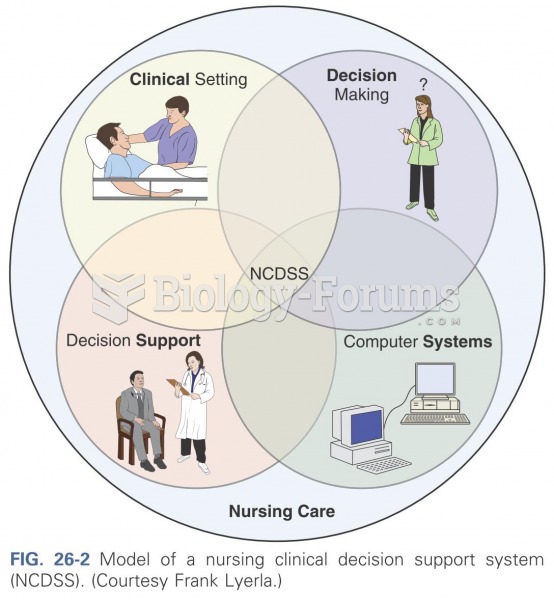This topic contains a solution. Click here to go to the answer
|
|
|
Did you know?
Anti-aging claims should not ever be believed. There is no supplement, medication, or any other substance that has been proven to slow or stop the aging process.
Did you know?
Lower drug doses for elderly patients should be used first, with titrations of the dose as tolerated to prevent unwanted drug-related pharmacodynamic effects.
Did you know?
In 1844, Charles Goodyear obtained the first patent for a rubber condom.
Did you know?
The horizontal fraction bar was introduced by the Arabs.
Did you know?
Illicit drug use costs the United States approximately $181 billion every year.
 In 2007, primatologists studying chimpanzees in Senegal reported something amazing; chimpanzees were
In 2007, primatologists studying chimpanzees in Senegal reported something amazing; chimpanzees were
 A second jetliner approaches the south tower of the World Trade Center on September 11, 2001. The no
A second jetliner approaches the south tower of the World Trade Center on September 11, 2001. The no





